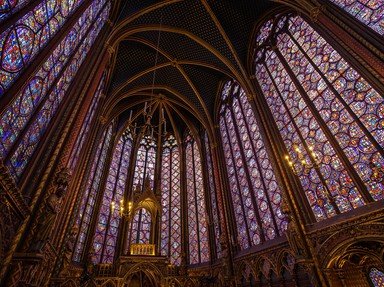Quiz Answer Key and Fun Facts
1. In which region of France is the city of Bayeux situated?
2. What is the approximate length, in metres, of the Bayeux tapestry?
3. It is almost certain that the tapestry was ordered and supervised by Odo, Bishop of Bayeux, the half-brother of William of Normandy. However, legend has it that the tapestry was principally embroidered by whom?
4. Apart from its role in telling the story of the events leading to and the conquest of England, to what practical purpose was the tapestry put on the 14th of July, 1077?
5. There are a total of six hundred and twenty-six figures on the tapestry. How many of these figures are actually identified by name?
6. In one tapestry scene, six frightened men are looking at a ball of fire in the sky. Which famous comet, known to have been visible in England between the 24th of April and the 1st of May 1066, is depicted on the tapestry?
7. In one scene, the tapestry depicts the sailing to England of the Norman fleet. What is the generally accepted but approximate number of ships that this fleet consisted of?
8. On 27th September 1066 the Norman fleet sailed from Saint-Valery-sur-Somme for England. Where on the English coast did this fleet land just a day later?
9. Riding toward the Saxon army, the Bishop of Bayeux, Odo de Conteville, is pictured on the tapestry armed with a heavy three-headed mace. Why would Odo not be carrying a sword into battle?
10. At the top of which hill did Harold regroup his Army and view the advance of the Normans?
11. At the foot of this hill and to strengthen his position, Harold had a deep and marshy ditch reinforced with sharp stakes. The Saxon English mount a furious attack against the Norman left flank which retreats in disarray and becomes trapped in this ditch with great loss of life. By what name is this ditch still known today?
12. Toward the end of the tapestry the narrative reads "Hic Harold rex interfectus est" which in English means "Here, King Harold is killed". How is King Harold generally believed to have died?
13. The Bayeux Tapestry carries a narrative which is written in which language?
14. Where was William of Normandy crowned King of England on Christmas Day 1066?
15. The first occasion that the tapestry was removed from Bayeux since it had been completed was to enable it to be displayed at the Louvre. On whose order was it removed and taken to Paris?
Source: Author
SisterSeagull
This quiz was reviewed by FunTrivia editor
stedman before going online.
Any errors found in FunTrivia content are routinely corrected through our feedback system.

